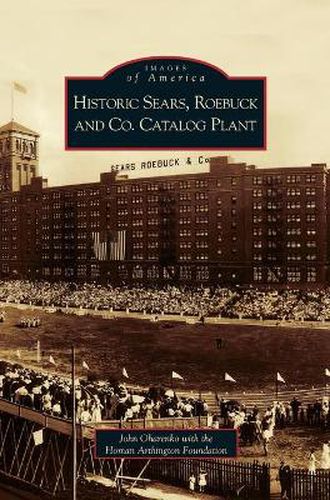Readings Newsletter
Become a Readings Member to make your shopping experience even easier.
Sign in or sign up for free!
You’re not far away from qualifying for FREE standard shipping within Australia
You’ve qualified for FREE standard shipping within Australia
The cart is loading…






This title is printed to order. This book may have been self-published. If so, we cannot guarantee the quality of the content. In the main most books will have gone through the editing process however some may not. We therefore suggest that you be aware of this before ordering this book. If in doubt check either the author or publisher’s details as we are unable to accept any returns unless they are faulty. Please contact us if you have any questions.
Located on the site of the original Sears Tower, the historic Sears, Roebuck and Company catalog plant is one of the nation’s most unique landmarks. Representing American ingenuity at its best, Richard Sears and Julius Rosenwald combined technology, commerce, and social science with bricks and mortar to build the World’s Largest Store on Chicago’s West Side. Completed in 1906, the plant housed nearly every conceivable product of the time: clothing, jewelry, furniture, appliances, tools, and more. The complex employed 20,000 people, and merchandise orders were processed and delivered by rail–within the same day. During the first two decades of the 20th century, almost half of America’s families shopped the over 300 million catalogs published in that era. WLS (World’s Largest Store) Radio broadcasted the Gene Autrey show from the top of the tower, and the first Sears retail store opened here on Homan Avenue and Arthington Street. In 1974, Sears moved to the current Sears Tower. Thanks to many individuals who fought to save these architecturally and historically important treasures, the administration building, the original Sears Tower, the catalog press-laboratory building, and the powerhouse remain today. There are currently plans for redeveloping these buildings into housing, office, and retail space. A new Homan Square Community Center stands on the site of the merchandise building.
$9.00 standard shipping within Australia
FREE standard shipping within Australia for orders over $100.00
Express & International shipping calculated at checkout
This title is printed to order. This book may have been self-published. If so, we cannot guarantee the quality of the content. In the main most books will have gone through the editing process however some may not. We therefore suggest that you be aware of this before ordering this book. If in doubt check either the author or publisher’s details as we are unable to accept any returns unless they are faulty. Please contact us if you have any questions.
Located on the site of the original Sears Tower, the historic Sears, Roebuck and Company catalog plant is one of the nation’s most unique landmarks. Representing American ingenuity at its best, Richard Sears and Julius Rosenwald combined technology, commerce, and social science with bricks and mortar to build the World’s Largest Store on Chicago’s West Side. Completed in 1906, the plant housed nearly every conceivable product of the time: clothing, jewelry, furniture, appliances, tools, and more. The complex employed 20,000 people, and merchandise orders were processed and delivered by rail–within the same day. During the first two decades of the 20th century, almost half of America’s families shopped the over 300 million catalogs published in that era. WLS (World’s Largest Store) Radio broadcasted the Gene Autrey show from the top of the tower, and the first Sears retail store opened here on Homan Avenue and Arthington Street. In 1974, Sears moved to the current Sears Tower. Thanks to many individuals who fought to save these architecturally and historically important treasures, the administration building, the original Sears Tower, the catalog press-laboratory building, and the powerhouse remain today. There are currently plans for redeveloping these buildings into housing, office, and retail space. A new Homan Square Community Center stands on the site of the merchandise building.